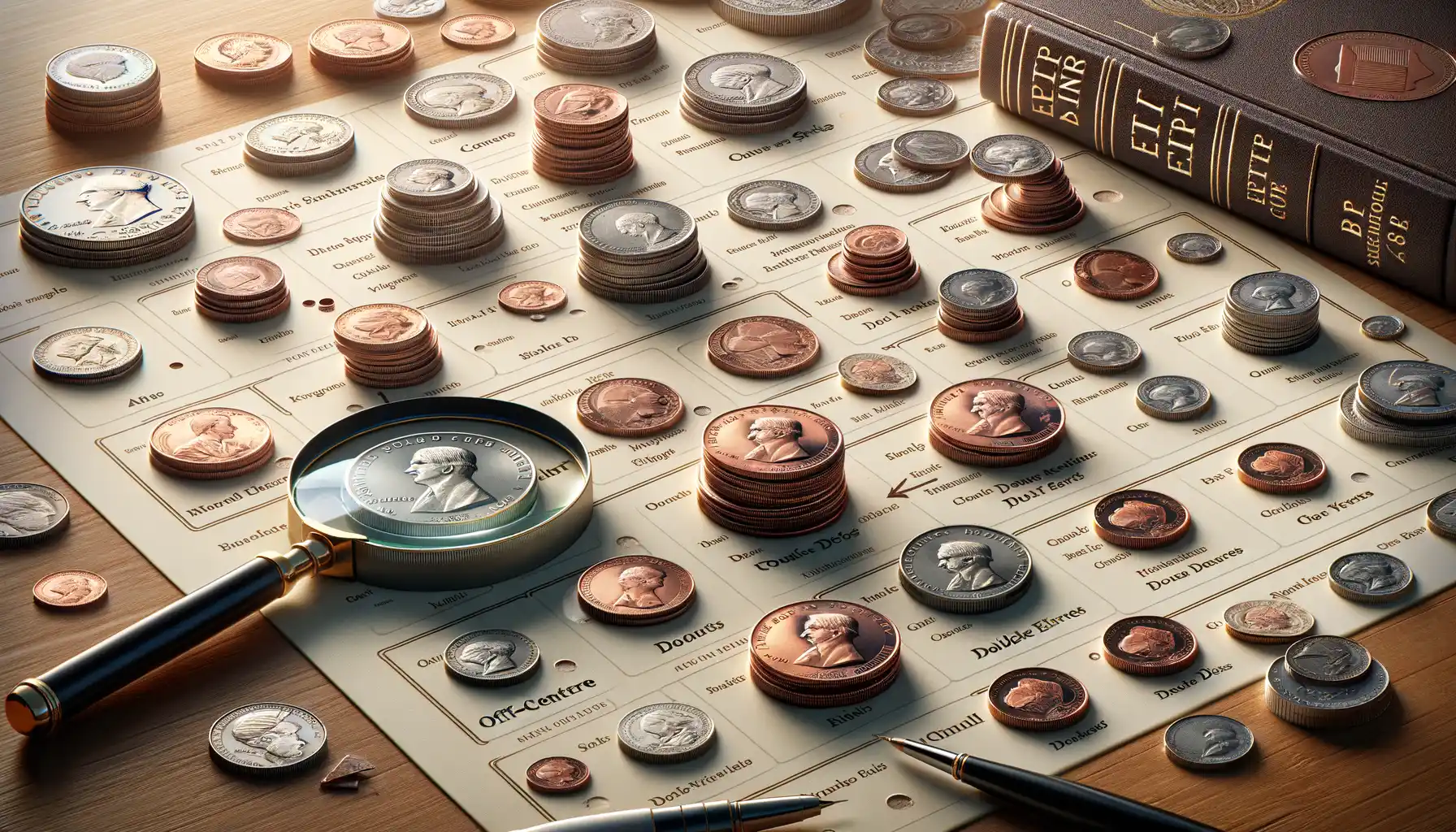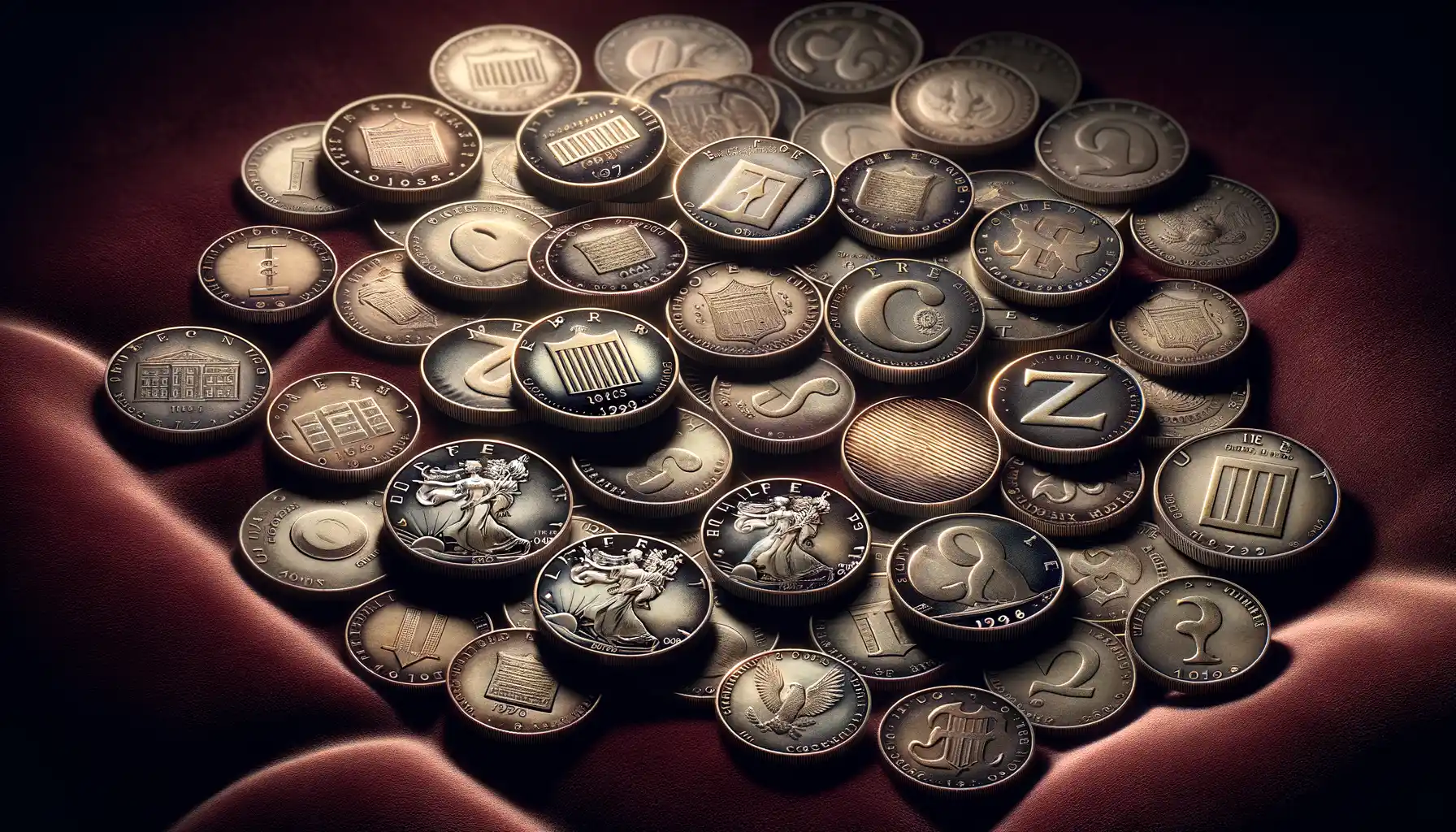Understanding Error Coins and Their Value
What Makes Error Coins So Fascinating?
Imagine stumbling upon a coin that’s not just currency but a peculiar, one-of-a-kind story stamped in metal. That’s the magic of error coins. These aren’t ordinary coins—no, they’re misfit treasures created by accident during the minting process. Errors could come from a misaligned die, an off-center strike, or even a mysterious double image. It’s as if these coins were destined to stand out from their mundane siblings.
Collectors and enthusiasts are drawn to error coins for more than just their rarity—they love the intrigue. Each one tells a tale of imperfection slipping past quality control. Some might call it a minting “oops moment,” but in the hands of collectors, it transforms into something extraordinary and valuable. A 1955 Lincoln penny with a doubled die? That’s worth thousands today!
The Value Behind the Flaw
What makes these oddities worth so much? It’s a mix of scarcity, demand, and sheer curiosity. When assessing value, keep an eye out for:
- Rarity: The fewer that exist, the higher the price.
- Condition: Flaws don’t mean neglect—pristine error coins fetch more.
- Historical Significance: Does the error tell a special story?
In the world of numismatics, imperfections can be perfection. Those little minting blunders? They might just be your ticket to uncovering treasure hidden in plain sight.
How to Identify Valuable Coin Errors

Spotting Hidden Treasures in Your Coins
Imagine this: you’re holding a coin, maybe from your morning coffee change or that dusty jar on your shelf. What if that seemingly ordinary piece of metal could be worth hundreds—or even thousands—just because of a quirky imperfection? Sounds like a treasure hunt, right? Well, that’s exactly what identifying valuable coin errors feels like!
Start by looking for the tell-tale signs of an error:
- Off-Center Strikes: Does the design look lopsided, with part of it missing? That’s no accident—it’s an off-center strike, and collectors adore these oddities.
- Die Cracks: Look closely. Does the surface have weird raised lines, almost like a lightning bolt etched into the coin? That could be a break in the die used to stamp it.
- Double Dies: Check for “ghost images” or doubled text/design elements. It’s like the coin couldn’t commit to stamping just one image!
Why Errors Strike Gold Among Collectors
Errors aren’t just mistakes—they’re moments frozen in time. For instance, a 1955 Lincoln cent with doubling on the date screams “rare gem” to seasoned seekers. Even subtle mistakes, like missing letters in inscriptions, can skyrocket a coin’s value.
Keep a magnifying glass handy and learn to see not just a coin, but its story. The thrill of discovery is half the joy—so go ahead, dive into that change jar!
Top Examples of Rare and Valuable Error Coins

Coins That Turned Mistakes into Masterpieces
Coins with errors aren’t just monetary flukes—they’re tiny works of accidental art! Imagine holding a coin worth thousands of dollars simply because something went wrong during its creation. Here are some legendary examples that collectors dream about:
- 1955 Doubled Die Lincoln Cent: This iconic penny is a masterpiece of misalignment. Its doubled inscriptions look like a ghostly echo of the original design. Spot one, and you could pocket $1,500–$20,000 depending on condition!
- 2000 Sacagawea Dollar “Mule” Coin: Talk about a mix-up! This dollar combines the obverse of a Sacagawea coin with the reverse of a Washington quarter. Only around 19 were ever found, worth upwards of $100,000 each.
- 1937 Three-Legged Buffalo Nickel: No, it’s not an optical illusion. A worn die led to this nickel’s buffalo missing a leg, turning it into a true numismatic oddity. Current value? Up to $50,000.
The Fascinating World of Struck-Through Errors
Another category of jaw-dropping coins is those with striking mishaps. One standout is the 1943 Steel Penny Struck on Bronze Planchet. Picture this: at the height of WWII, when copper was reserved for ammunition, a few bronze blanks were still accidentally used. Today, these rare pennies have auctioned for more than $200,000!
Then there are coins with foreign objects—like cloth or wire—accidentally pressed into the metal during minting. Each piece tells a unique story, almost like finding a fingerprint from the past. If you stumble across one, don’t dismiss it; you might be uncovering a small fortune wrapped in mystery.
Where and How to Search for Error Coins

Discovering Hidden Gems in Everyday Places
Have you ever wondered if a tiny treasure could be hiding in plain sight? Searching for error coins is like embarking on a modern-day treasure hunt—right from your pocket change! Start by looking at the coins that pass through your hands daily. Those quarters from your morning coffee run or pennies lying forgotten in your car’s cupholder could hold surprises.
A great place to explore is rolls of coins from banks. When you exchange bills for rolls of quarters, nickels, or pennies, you’re essentially opening packs of potential goldmines—well, not literally, but you get it. Keep a magnifier handy and check each coin for misaligned designs, doubled letters (think “extra shadows” on text), or odd shapes that scream “one-of-a-kind.”
If you’re up for adventure, flea markets and estate sales are bursting with loose change collections. It’s the thrill of the unknown: that cereal box full of dusty coins? They could hide a minting error worth thousands.
- Get creative—check vending machines and laundromats for odd-looking coins.
- Ask family members if they have jars of coins—they might unknowingly own a rare find!
Online Communities: Your Digital Treasure Map
The internet is another goldmine for aspiring coin enthusiasts. Join forums like CoinTalk or browse listings on platforms like eBay. Members often share photos of newly discovered errors or provide tips on what to look for. Some even trade error coins, so you can start or expand your collection.
Oh, and don’t underestimate coin auctions—both live and online. Sure, bidding wars can get intense, but trust me, the adrenaline rush of winning a rare coin is unforgettable. Plus, reputable auction sites often vet their items, ensuring authenticity.
Every coin tells a story. The trick is knowing where to look and having the patience to let your curiosity guide you. Happy hunting!
Tips for Collecting and Selling Error Coins

Secrets to Spotting Error Coins Like a Pro
Picture this: you’re holding a handful of coins, and hidden among them could be a small fortune just waiting to be discovered. The thrill of finding an error coin is like treasure hunting with a magnifying glass! But how do you separate the gems from the pocket change? Here’s how:
- Look closely: Grab a loupe or magnifying glass and inspect for anomalies like doubled letters, off-center strikes, or missing designs.
- Light matters: A well-lit space can highlight tiny imperfections. Try tilting the coin under a desk lamp to catch details you might otherwise miss.
- Know your mint marks: Certain U.S. mints are more prone to producing errors—make friends with Philadelphia, Denver, and San Francisco mint quirks!
Tips to Get Top Dollar When Selling
So, you’ve got an error coin—congrats! Now, let’s cash in. First, research similar coins online (eBay is your buddy) to estimate value. Next, join collector forums or visit coin shows; these folks love quirky coins as much as you do. And when selling, use buzzwords like “scarce,” “unique,” or “rare” in your listing—it’s like catnip for collectors!
